Punctuation
This page lists of the various symbols in the Punctuation group.
Punctuation marks are symbols that indicate the structure and organization of written language, as well as intonation and pauses to be observed when reading aloud.
In written English, punctuation is vital to disambiguate the meaning of sentences. For example, "woman, without her man, is nothing" (emphasizing the importance of men) and "woman: without her, man is nothing" (emphasizing the importance of women) have greatly different meanings, as do "eats shoots and leaves" (to mean "consumes plant growths") and "eats, shoots and leaves" (to mean "eats firstly, fires a weapon secondly, and leaves the scene thirdly").
The rules of punctuation vary with language, location, register and time and are constantly evolving. Certain aspects of punctuation are stylistic and are thus the author's (or editor's) choice.
Symbols in this group:
Acclamation Point
An unconventional punctuation mark indicating an enthusiastic demonstration of honor, goodwill, or welcome.
Ampersand
An ampersand (or epershand; "&") is a logogram representing the conjunction word "and". This symbol is a ligature of the letters et, Latin for "and".
Apostrophe
The apostrophe ( ’ although often rendered as ' ) is a punctuation mark, and sometimes a diacritic mark, in languages that use the Latin alphabet or certain other alphabets.
Asterisk
An asterisk (*; Late Latin: asteriscus, from Greek: ἀστερίσκος, asteriskos, "little star") is a typographical symbol or glyph. It is so called because it resembles a conventional image of a star.
Asterism
The asterism is used to draw attention to a passage of text, or divide chapters, verses, and other segments in a piece of writing.
At sign
The at sign @ is also commonly called the at symbol, ampersat, apetail or commercial at in English—and less commonly a wide range of other terms
Authority Point
An unconventional punctuation mark intended to convey a note of expertise.
Braces or Curly Brackets
Curly brackets – also properly called braces in the US – are used in specialized ways in poetry and music (to mark repeats or joined lines).
Bullet
In typography, a bullet ( • ) is a typographical symbol or glyph used to introduce items in a list
Caret
Caret is an inverted V-shaped grapheme. Specifically, caret commonly refers to the spacing character ^ in ASCII (at code point 5Ehex) and other character sets that may also be called a hat, control, uparrow, or less frequently chevron, xor sign, to the [power of], fang, shark (or shark-fin), pointer (in Pascal), or wedge. Officially, this character is referred to as circumflex accent in both ASCII and Unicode terminology (because of its historical use in overstrike), whereas caret refers to a similar but lowered Unicode character: U+2038 ‸ caret. Additionally, there is another lowered variant with a stroke: U+2041 ⁁ caret insertion point
Certitude Point
An unconventional punctuation mark used to let the reader know that the writer is absolutely certain something is true.
Colon
The colon is a punctuation mark consisting of two equally sized dots centered on the same vertical line. In Unicode, it is encoded at U+003A : colon (HTML: :).
Comma
The comma (,) is a punctuation mark, and it appears in several variants in various languages
Dagger
A dagger, or obelisk, U+2020 † dagger (HTML: † †), is a typographical symbol or glyph. The term "obelisk" derives from Greek ὀβελίσκος (obeliskos), which means "little obelus"; from Ancient Greek: ὀβελός (obelos) meaning "roasting spit". It was originally represented by the ÷ symbol and was first used by the Ancient Greek scholars as critical marks in manuscripts.
A double dagger or diesis, U+2021 ‡ double dagger (HTML: ‡ ‡), is a variant with two handles.
Dash
The dash is a punctuation mark that is similar in appearance to the hyphen and minus sign but differs from these symbols in length and, in some fonts, height above the baseline.
Degree Symbol
The degree symbol (°) is a typographical symbol that is used, among other things, to represent degrees of arc (e.g. in geographic coordinate systems), hours (in the medical field), or degrees of temperature. The symbol consists of a small raised circle, historically a zero glyph.
Ditto mark
The ditto mark (aka Stenoien Mark) (〃) is a typographic symbol indicating that the word(s) or figure(s) above it are to be repeated.
Doubt Point
An unconventional punctuation mark used when the writer wants to end a sentence with a skeptical tone.
Ellipsis
Ellipsis (plural ellipses; from the Ancient Greek: ἔλλειψις, élleipsis, "omission" or "falling short") is a series of dots that usually indicate an intentional omission of a word, sentence or whole section from the original text being quoted, and though necessary for syntactical construction, is not necessary for comprehension.
Exclamation Comma
An unconventional punctuation mark that allows the writer to use an exclamation point in the middle of a sentence.
Exclamation mark
The exclamation mark or exclamation point is a punctuation mark usually used after an interjection or exclamation to indicate strong feelings or high volume (shouting), and often marks the end of a sentence. Example: “Watch out!”
Full Stop or Period
A full stop (British English, Hiberno-English, Australian English, and New Zealand English) or period (American English and Canadian English) is the punctuation mark placed to indicate the end of sentences.
Guillemet
Guillemets (pron.: /ˈɡɪləmɛt/, or /ɡiːəˈmeɪ/, French: [ɡijmɛ]), also called angle quotes or French quotation marks, are polylines, pointed as if arrows (« or »), sometimes forming a complementary set of punctuation marks used as a form of quotation mark.
Hemidemisemicolon
An unconventional punctuation mark capable of taking the place of periods, commas, and semicolons.
Hyphen
The hyphen (‐) is a punctuation mark used to join words and to separate syllables of a single word. The use of hyphens is called hyphenation.
Interrobang
An unconventional punctuation mark intended to combine the functions of the question mark and exclamation point.
Inverted question and exclamation marks
Inverted question (¿) and exclamation marks(¡) are punctuation marks used to begin interrogative and exclamatory sentences (or clauses), respectively, in written Spanish and sometimes also in languages which have cultural ties with Spanish, such as in older standards of Galician (now it is optional and not recommended) or Catalan.
Irony Mark
An unconventional punctuation mark that indicates a state of affairs that is contrary to what one expects, and is often used to evoke humor.
Love Point
An unconventional punctuation mark intended to denote a statement of affection.
Mockwotation Marks
An unconventional punctuation mark meant to indicate that the person who is being quoted is being mocked.
Number Sign
Number sign is a name for the symbol #, which is used for a variety of purposes, including the designation of a number (for example, "#1" stands for "number one"). The symbol is defined in Unicode as U+0023 # number sign (HTML: # as in ASCII).
Numero
The numero sign or numero symbol, № (also represented as Nº, No, or No.) is a typographic abbreviation of the word number indicating ordinal numeration, especially in names and titles.
Parentheses
Parentheses (/pəˈrɛnθɨsiːz/) (singular, parenthesis (/pəˈrɛnθɨsɨs/)) (also called simply brackets, or round brackets, curved brackets, oval brackets, or, colloquially, parens) contain material that could be omitted without destroying or altering the meaning of a sentence.
Period (Friendly)
An unconventional punctuation mark which combats misperception of a period by lightening the tone of what would otherwise be read as a bitter or sarcastic sentence.
Period (Impartial)
An unconventional punctuation mark that indicates a lack of hostility or other emotion.
Pilcrow
The pilcrow, also called the paragraph mark, paragraph sign, paraph, alinea (Latin: a lineā, "off the line"), or blind P, is a typographical character for individual paragraphs.
Question Comma
This unconventional punctuation mark allows the writer to use a question mark in the middle of a sentence since the period element has been replaced by a comma.
Question Mark
The question mark (?; also known as an interrogation point, interrogation mark, question point, query, or eroteme), is a punctuation mark that replaces the full stop (period) at the end of an interrogative sentence in English and many other languages.
Rhetorical Question Mark
An unconventional punctuation mark that indicates a rhetorical question.
Section sign
The section sign (Unicode U+00A7 § section sign, HTML §, TeX \S) is a typographical character used mainly to refer to a particular section of a document, such as a legal code. It is also called "double S", "hurricane", "sectional symbol", "the legal doughnut".
Semicolon
The semicolon (;) is a punctuation mark with several uses. The Italian printer Aldus Manutius the Elder established the practice of using the semicolon to separate words of opposed meaning and to indicate interdependent statements.
Semiquestionmacolon
Semiquestionmacolon used in a series of rhetorical questions. Why do Americans like grammar?; Why bother?; Isn't it too bothersome?
Sinceroid
An unconventional punctuation mark meant to indicate that the writer is being sincere, as opposed to conveying any other emotion.
Single Quotation Mark
The single quotation marks emerged around 1800 as a means of indicating a secondary level of quotation.
Slash
The slash (/) is a sign used as a punctuation mark and for various other purposes. It is often called a forward slash (a retronym used to distinguish the slash from the backslash, "\"), and many other alternative names.
Snark Mark
This unconventional punctuation mark helps the reader understand when the meaning of a sentence is different than what the sum of its words appear to mean.
Snark Mark (Variant)
This unconventional punctuation mark helps the reader understand when the meaning of a sentence is different than what the sum of its words appear to mean.
Square brackets
Square brackets—also called crotchets or simply brackets (US)—are often used to insert explanatory material or to mark where a [word or] passage was omitted from an original material by someone other than the original author, or to mark modifications in quotations.
Therefore Sign
The symbol consists of three dots placed in an upright triangle and is read therefore.
Tilde
The tilde (/ˈtɪldə/, /ˈtɪldi/; ˜ or ~ or "Squiggly" ) is a grapheme with several uses. The name of the character comes from Portuguese and Spanish, from the Latin titulus meaning "title" or "superscription", though the term "tilde" has evolved and now has a different meaning in linguistics. Some may refer to it as a "flourish".
Citation
Use the citation below to add this symbols group page to your bibliography:
Style:MLAChicagoAPA
"Punctuation Symbols." Symbols.com. STANDS4 LLC, 2025. Web. 21 Feb. 2025. <https://www.symbols.com/group/48/Punctuation>.


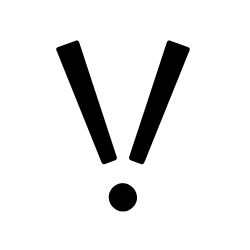
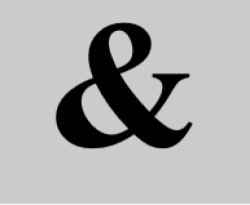
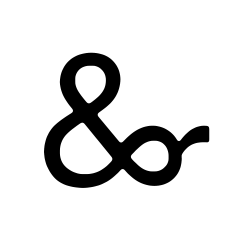
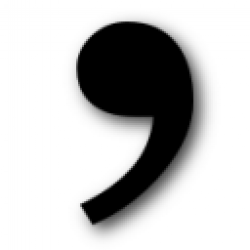
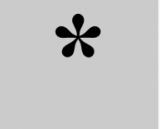
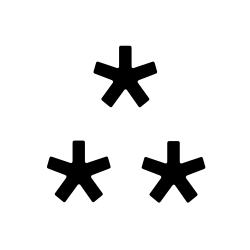
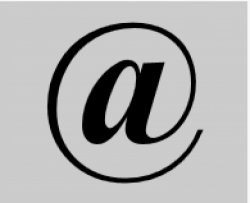
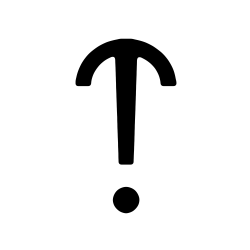
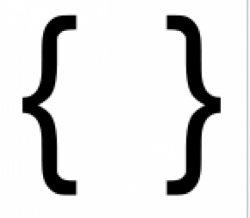
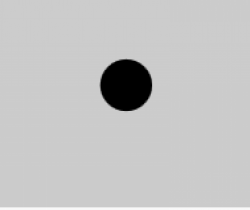
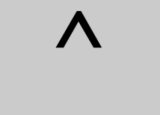
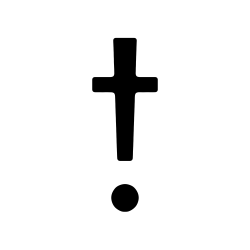
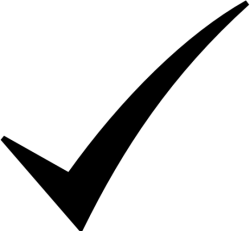
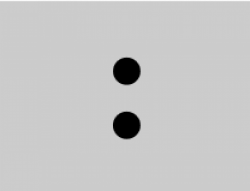
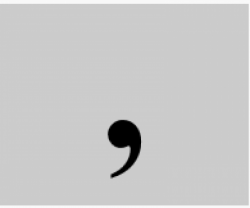
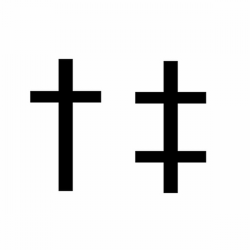
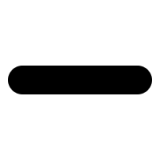
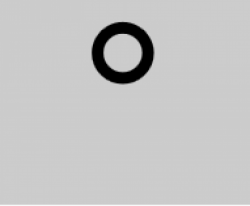
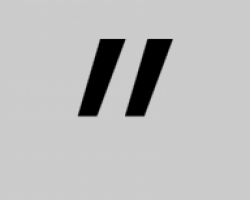
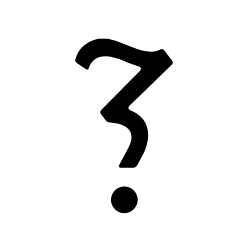
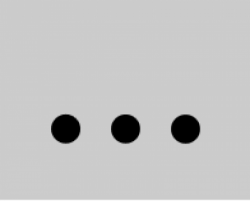
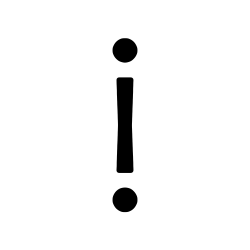
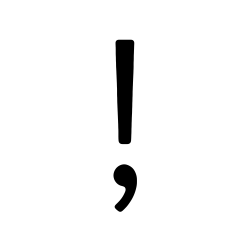
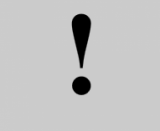
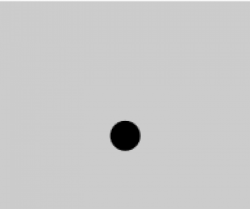
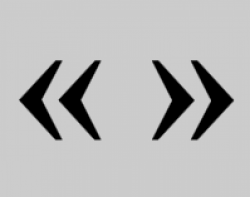
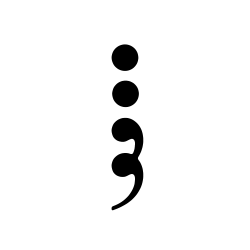
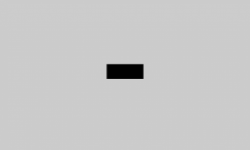
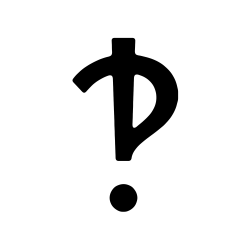
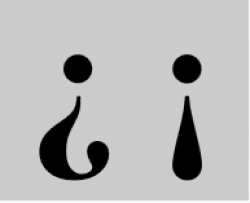
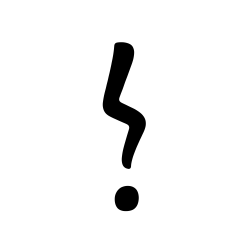
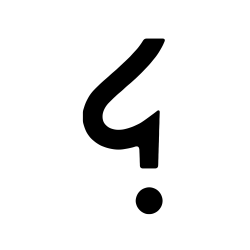
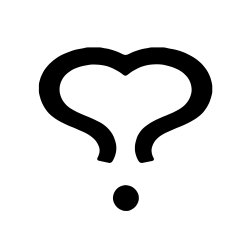
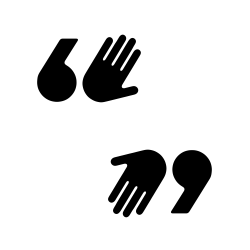
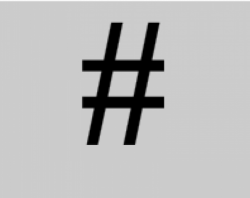
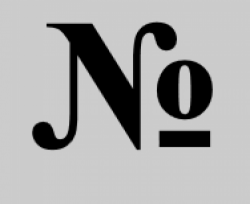
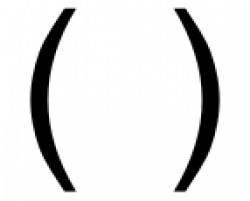
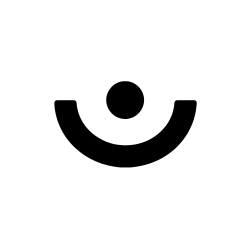
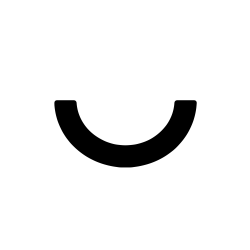
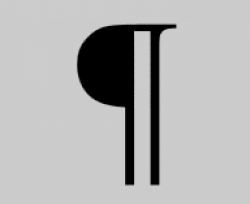
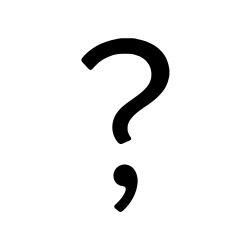
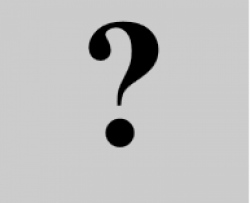
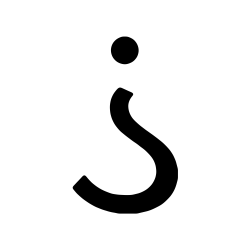
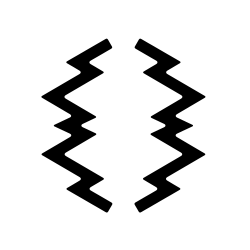
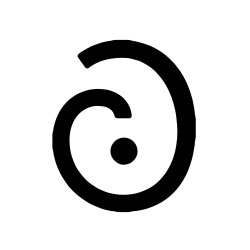
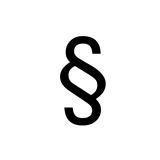
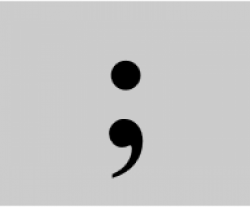
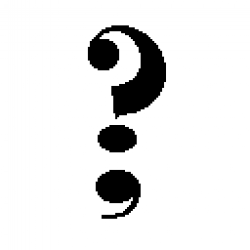
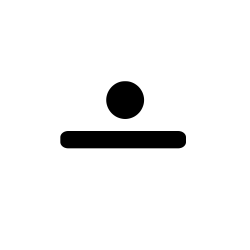
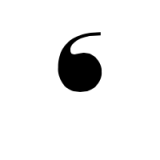
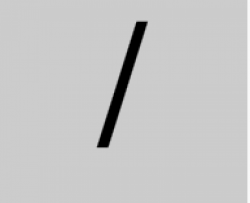
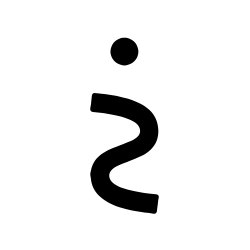
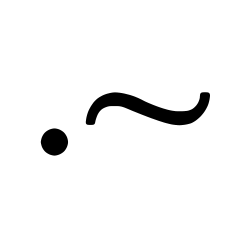
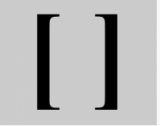
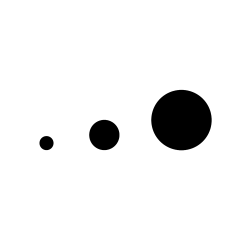
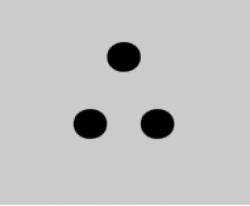

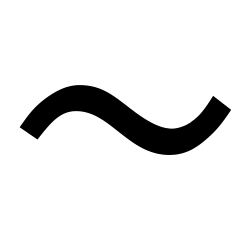




Have a discussion about the Punctuation group with the community:
Report Comment
We're doing our best to make sure our content is useful, accurate and safe.
If by any chance you spot an inappropriate comment while navigating through our website please use this form to let us know, and we'll take care of it shortly.
Attachment
You need to be logged in to favorite.
Log In